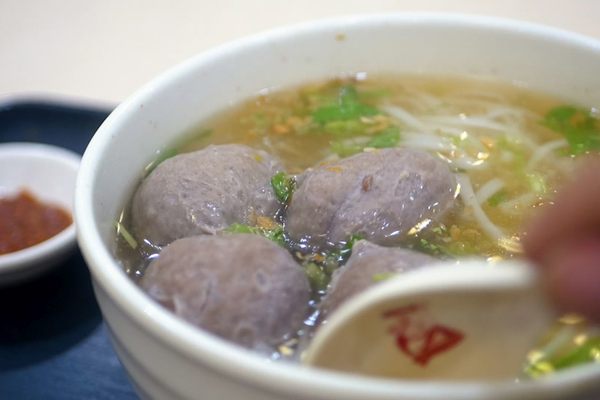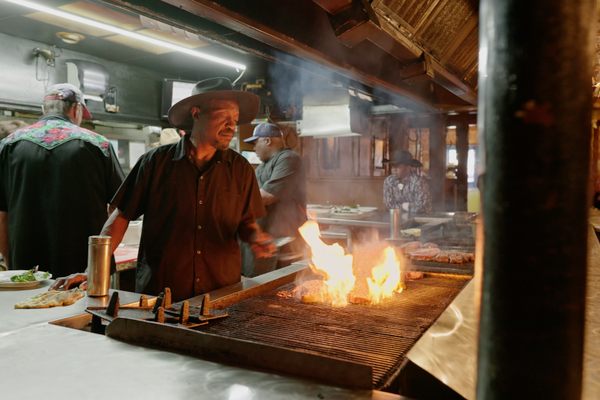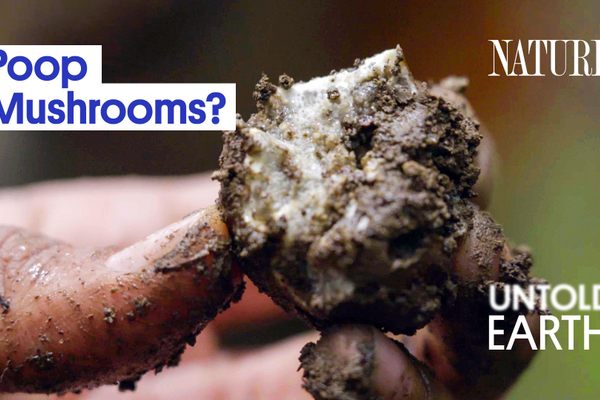This was an exciting year for cookbooks. New releases focused on a diverse variety of cuisines and included the debuts of several exciting authors. Interconnectedness was a key theme, with many books drawing from global influences or emphasizing the fusion of international traditions and groups of people. Gastro Obscura spoke with many authors about how their culture and personal experiences have shaped their goals for developing and sharing recipes. We also explored historical cookbooks and the role they played in creating the food we know and love today. From the old to the new, here are our favorite cookbook stories of 2023.
Meet the Chef Reviving Royal Cambodian Recipes
By Diana Hubbell, Associate Editor, Places
For her first cookbook, released in 2019, chef Rotanak Ros collected recipes across her native Cambodia to craft a complete picture of Cambodian home cooking. For her second cookbook, Saoy: Royal Cambodian Home Cuisine, Ros turned to the dishes of the Cambodian royal palace in the mid-20th century and the state dinners designed to welcome foreign dignitaries to the country. Ros spoke with editor Diana Hubbell about her research on the unique delicacies served in Cambodia’s palace kitchens as well as women’s rights advocate, cookbook author, and princess Rasmi Sobbhana, who dedicated her life to raising the profile of Cambodian cuisine.
This Book Created Italian Food as We Know It
By Andrew Coletti, Gastro Obscura Editorial Fellow
Unlike most of the cookbooks on this list, Science in the Kitchen and the Art of Eating Well by Pellegrino Artusi isn’t a new release; it was first published more than 130 years ago. In the late 19th century, when the modern nation of Italy unified, Italians found themselves in search of a national cuisine to complement their new national identity. Artusi’s cookbook was the first to bring together various regional traditions under the banner of “Italian food” and remains well-known in Italy today. I explored how Artusi became an Italian cookbook legend and made one of his recipes, for a sweet almond custard pie with the surprising name of “Neapolitan pizza.”
View this post on Instagram
The Karuk Cook Restoring California’s Native Cuisine, One Acorn at a Time
By Naomi Tomky
For the Karuk people of northern California, native plants like stinging nettle, spruce, and California bay leaf form an integral part of the traditional diet. Most essential of all is the acorn, which once provided daily nutrition for over 75 percent of Indigenous Californians. In Chími Nu’am: Native California Foodways for the Contemporary Kitchen, Sara Calvosa Olson celebrates California’s native flora instead of its commercial crops. Calvosa Olson draws on the traditions of her Karuk heritage as well as global influences to innovate new recipes with Native ingredients, like wildflower spring rolls and acorn flour crackers.

Yewande Komolafe Explores the Many Flavors of Nigerian Food
By Diana Hubbell, Associate Editor, Places
Another cookbook debut Gastro Obscura featured this year was My Everyday Lagos, in which Brooklyn-based recipe developer and food stylist Yewande Komolafe explores the dizzyingly varied food of her home city. As the capital of Nigeria, Lagos features regional cuisines brought there by people from all over the country, each with their own array of techniques and traditions. Komolafe uses her experience in culinary school and restaurant kitchens to analyze these varied food customs with a technical precision. “I implore you not to approach this cookbook from the perspective of an outsider,” Komolafe writes, inviting readers to investigate Nigeria’s rich food traditions while dispelling myths that position Nigerian food as inaccessible, unrefined, or repetitive.

Looking for the Perfect Onion
By Mark Kurlansky
Food historian Mark Kurlansky is known for his comprehensive deep dives into specific ingredients, like milk and salt, or specific food animals, like salmon, codfish, and oysters. In his latest work, The Core of an Onion: Peeling the Rarest Common Food, Kurlansky investigates our centuries-long relationship with the plant. The book’s incredible level of detail includes more than 100 recipes drawn from various historical eras. Gastro Obscura published an excerpt on modern onion crossbreeding, including the origins of Georgia’s famously sweet Vidalia onions.
The Fantastical Feasts of England’s First Celebrity Chef
By Amanda Herbert
The Accomplisht Cook by Robert May, published around 1660, is proof that theatrical presentation has been a part of dining for centuries. In his cookbook, May documented the outrageous edible entertainments he designed for the tables of European nobility, such as a wounded pastry deer that bled wine and fragrant “water balloon” fights using eggshells filled with rose water. Amanda Herbert spoke with a librarian from the Folger Shakespeare Library, which has digitized May’s cookbook, about the work and legacy of the man considered England’s first celebrity chef.

‘Made in Taiwan’ Is a Love Letter to the Island Nation
By Diana Hubbell, Associate Editor, Places
When Hubbell asked Taiwanese-American food journalist Clarissa Wei to name a recipe from her debut cookbook that stands out the most, she chose Taiwanese beef noodle soup, but not for the reason you might think. While beef noodle soup is one of the best-known Taiwanese dishes, what makes it stand out to Wei is that it developed from a merging of international influences. It’s the kind of recipe that could have been created only in Taiwan, thanks to the arrival of different groups of migrants. “People always attribute it to one source, but it’s more nuanced than that,” Wei explains. In her cookbook, Made in Taiwan, Wei delves into the unique factors that have shaped Taiwanese food and identity.
Gastro Obscura covers the world’s most wondrous food and drink.
Sign up for our email, delivered twice a week.






















Follow us on Twitter to get the latest on the world's hidden wonders.
Like us on Facebook to get the latest on the world's hidden wonders.
Follow us on Twitter Like us on Facebook